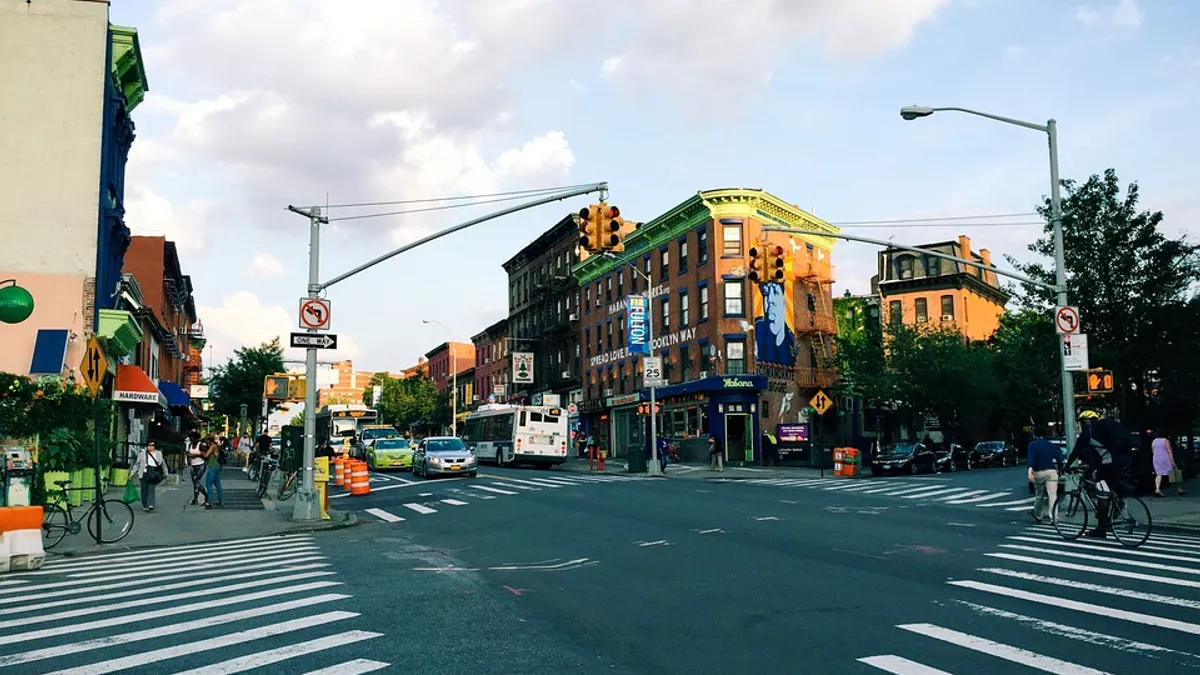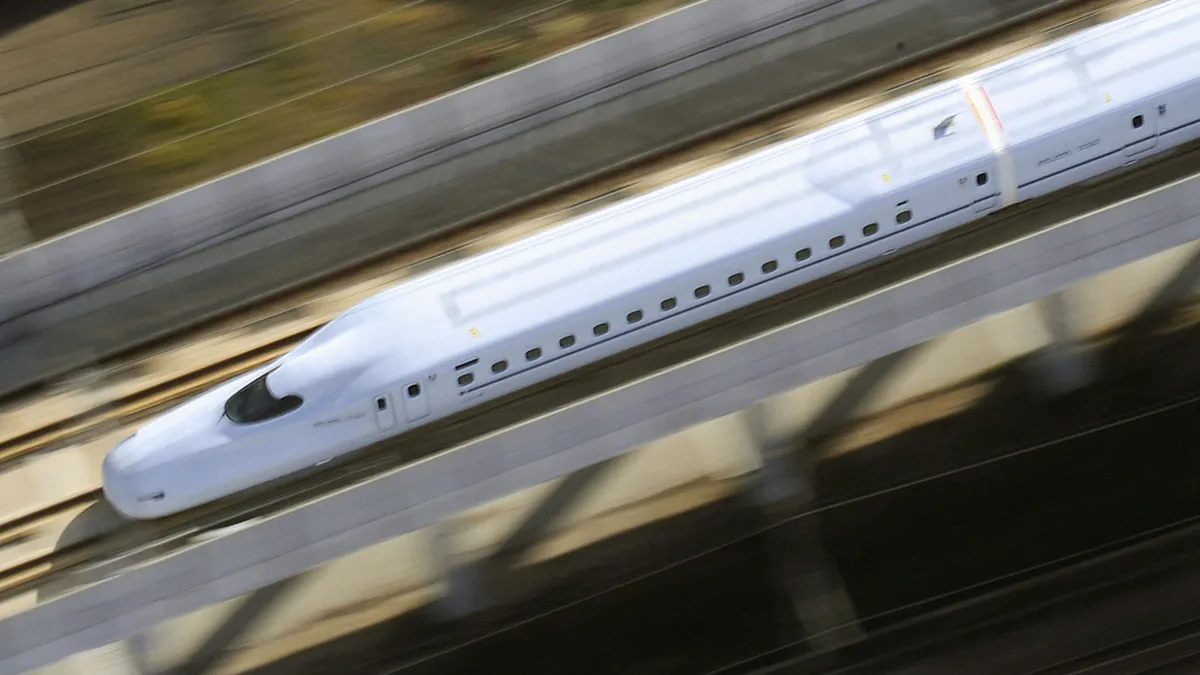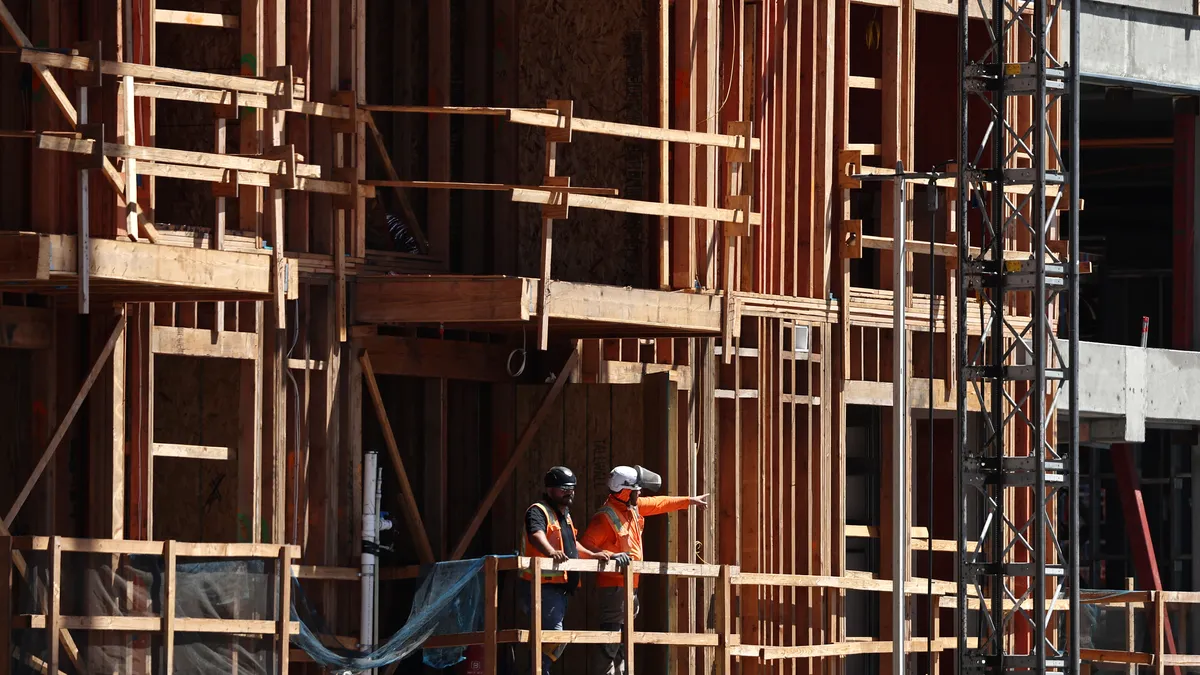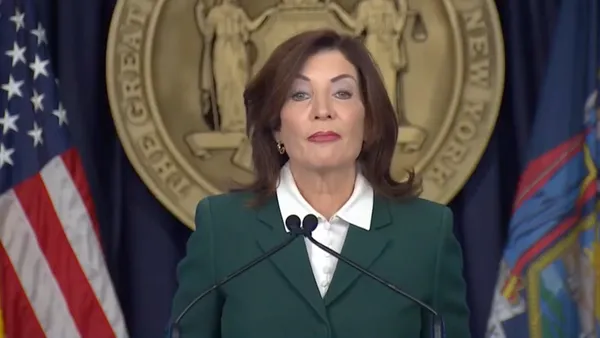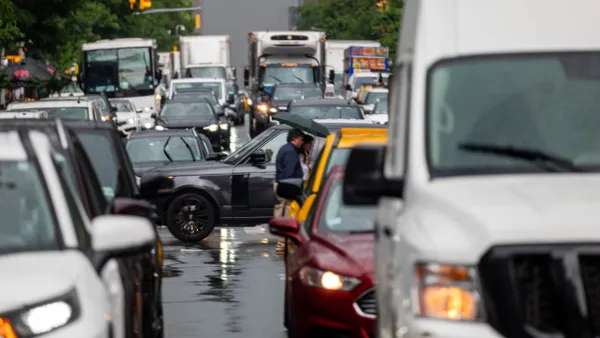Dive Brief:
- U.S. drivers experience a collective 17.25 million hours of delays per day at intersections with poorly timed traffic signals, according to a new study from transportation analytics company INRIX.
- The analysis of 210,000 intersections found that nearly 7% of delays experienced during a trip are at poorly timed traffic signals, and those delays result in increased carbon emissions, often concentrated at intersections. Those delays are most often found in densely populated cities like New York and Los Angeles, with the latter home to more than 1.7 million hours of delay for drivers each day, INRIX said.
- If better coordinated timings increased travel speeds by 10%, INRIX said, that could cut emissions by at least 5% and reduce up to 80,000 gallons of gasoline wasted each year across the 25 U.S. intersections with the worst delays. INRIX said new technology like vehicle-to-everything (V2X) infrastructure could help keep people moving more smoothly.
Dive Insight:
Cities have seen vehicle congestion reduced amid the coronavirus pandemic, but have also seen speeds increase at sometimes dangerous levels. And with a reduction in people traveling or commuting during remote work and stay-at-home orders, emissions have also been driven down.
With the transportation sector responsible for a large amount of urban emissions, INRIX transportation analyst Bob Pishue said taking the time to re-time traffic signals and prevent emissions build-up from engines idling at red lights could be a small way to further improve air quality in addition to the larger actions cities are taking.
"[Cities are] all looking at carbon emissions, as priority No. 1, or in the top few priorities that they have," Pishue said. "This was one thing that really stands out. It's not necessarily the top of people's lists, like shutting down coal plants or something like that. But this is obviously a source of emissions. That should be looked at to try to minimize carbon emissions at these intersections."
Pishue said a city's signal re-timing efforts must be holistic and data-driven, and there has already been some success. INRIX partnered with Austin, TX on monitoring its major thoroughfares and re-timing signals, and the city has seen travel times reduced as much as 25% in some places. But that re-timing needs to be done at a "regular cadence," Pishue said.
In addition to re-timing signals, INRIX said cities should look to take advantage of the fact that their infrastructure is becoming more digitized and reliant on technology. That includes the increased installation of V2X infrastructure at intersections so that signals are better able to sense traffic and help it move through, and the use of technology to manage curb space and avoid congestion there too. In a recent report, Transportation for America called for cities to take the lead on curb management and not leave it only to private companies.
Pishue said with all the competing demands on city infrastructure, making use of technological advances can help ease delays at curbside, and at intersections.
"Anytime you're dealing with a grid or a transportation network, having all of these things connected and talking to each other is absolutely vital," he said. "That's the role I see it playing, and this is one part of the digitizing of a downtown grid or a city's transportation network."



